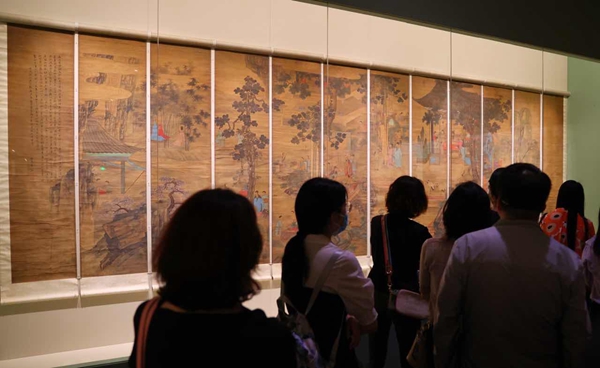

Zhu Wanzhang, the exhibition's curator and an expert on Chinese painting at the same museum, says the show reflects the immensity and diversity of classic ink-color paintings housed at the museum.
He says as one of the oldest categories of Chinese art, portraiture boomed in the Ming and Qing eras when the genre experienced reforms in techniques and styles, for example, adopting the figurative strokes and a contrast between light and shadow of Western paintings to cater to the aesthetic views of the population then.
The looks of historic luminaries are one of the draws of portraiture shows. At the Harmony of Figures and Spirits exhibition, attention was drawn to a juxtaposition of two distinctively different portraits of Zhu Yuanzhang, founder of the Ming Dynasty: One by court painters shows a dignified emperor in his twilight years and another, by civil artists, shows him with a dysmorphic face covered in black moles. The two paintings reflect divided opinion of his character and ruling style.
Zhu Wanzhang says the current exhibition gathers portraits of noted civil officials and military figures in history, some of which are being shown for the first time. This includes one imagined portrait of Yue Fei, a general known for leading the forces of the Southern Song Dynasty (1127-1279) in fights against nomadic invaders from northern China. A symbol of integrity, loyalty and patriotism, he has been painted throughout centuries.